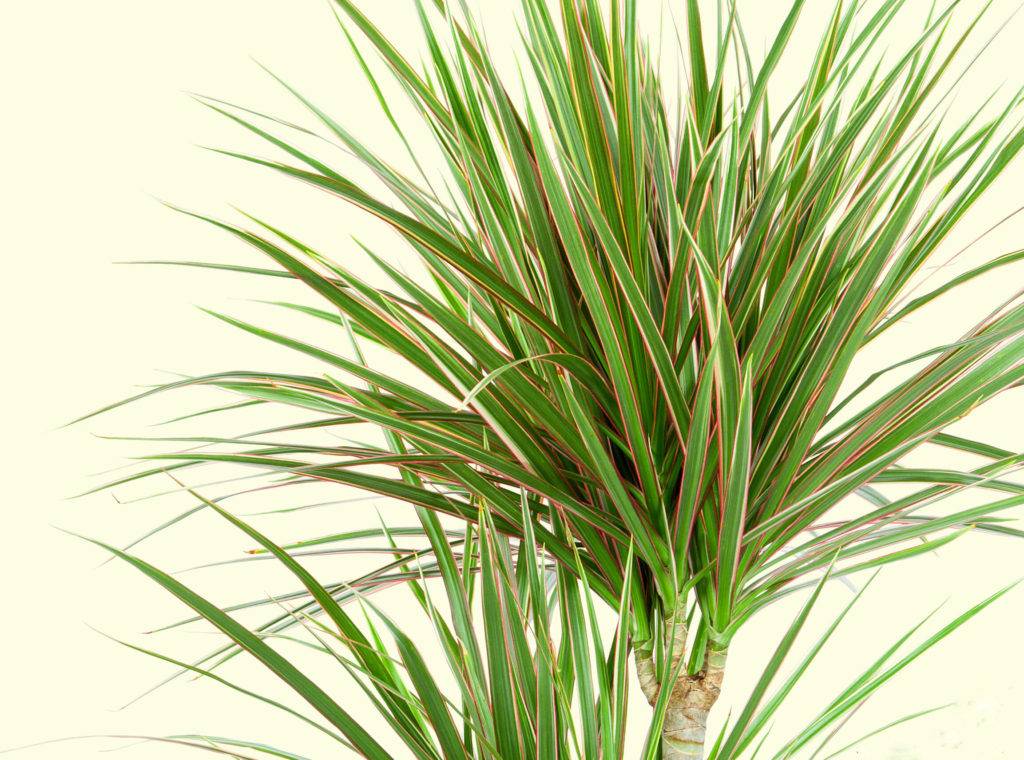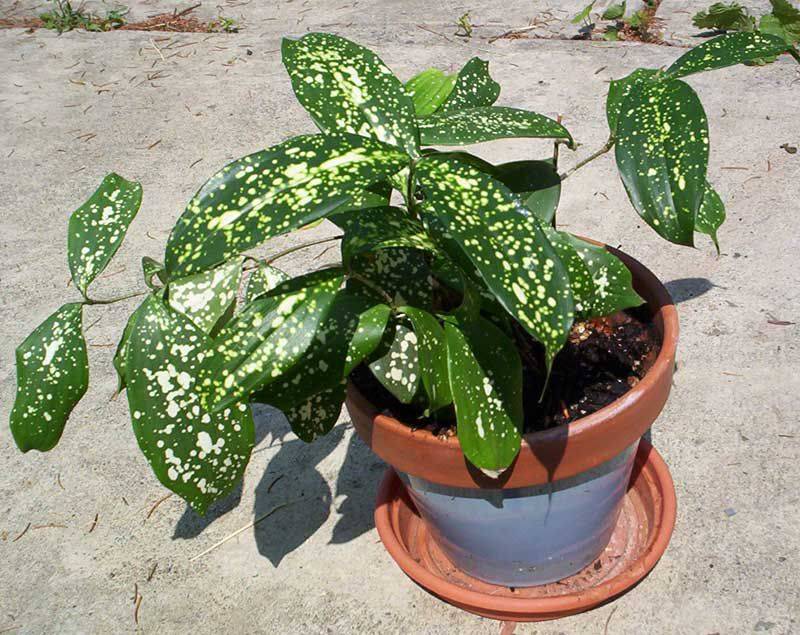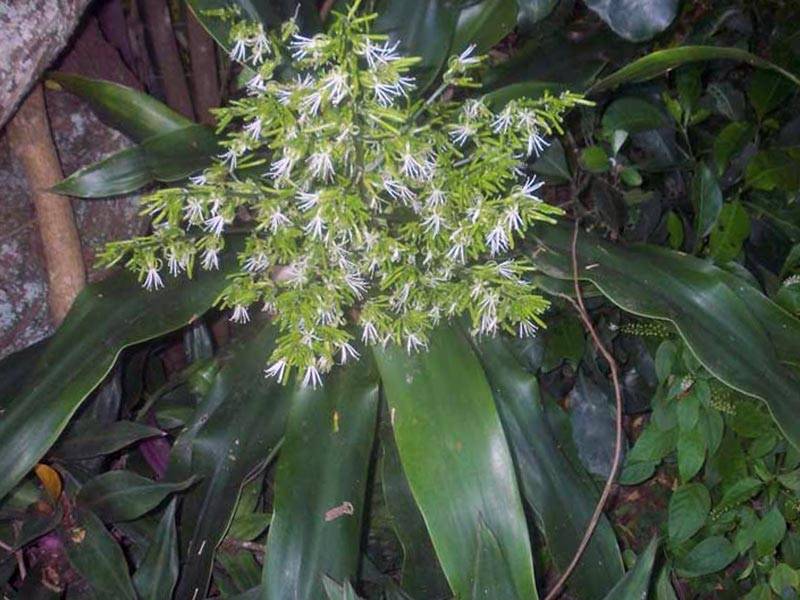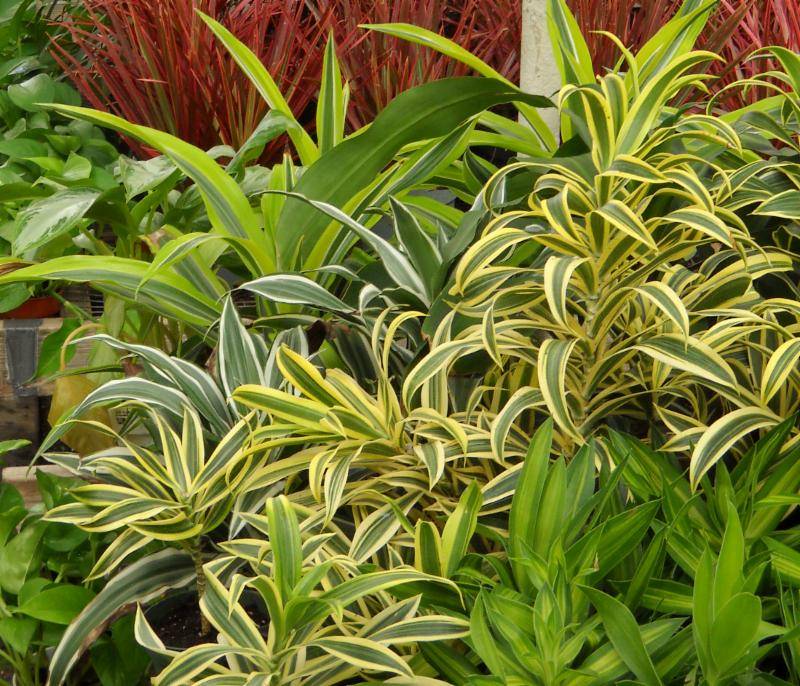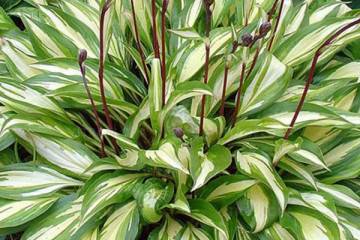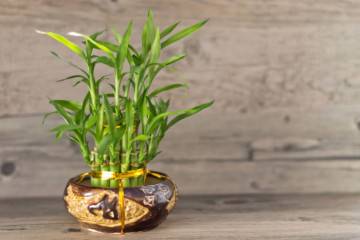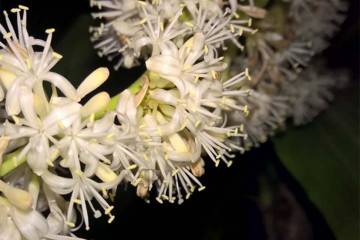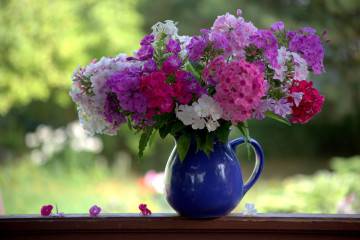Dracaena - types and popular varieties
Content:
Dracaena is a beautiful graceful home "palm". It is classified as one of the popular houseplants with showiness and brightness. Its name is otherwise translated as "dragon". It is easy to grow such a plant at home, because in everyday life it is unpretentious.
Dracaena: types
Varieties that have a small height fit perfectly on a windowsill or on the floor in a specially equipped place in the room. In addition to the successful settling of apartments and private houses, the flower feels great in offices, decorates halls, receptions. There is dracaena, the species of which are suitable for growing in wide areas.
Description of the plant
It belongs to the vast and varied genus of plants. There are more than a hundred species in it. Some are too large, they feel great in natural conditions. Others can be grown in greenhouses, at home, in apartments. Some of them get along well in rooms and greenhouses.
The plant was born in Africa. Also Madagascar and Mascarene Islands are considered his homeland. Some of the varieties are considered to be from Asia.
The hallmark of the dracaena, the types and names of which are incredibly extensive, is its appearance. The plant is known for its lignified trunk, long, pointed narrow leaves, on which parallel veins flaunt, converging at the tips. In the process of temporary plant formation, yellowness and dying off of the lower leaves occur. The average lifespan of a plant is up to 2 years, but there are species that live much longer.
The roots have an interesting feature of the family. They are smooth, straight. They have an unusual orange or dark yellow hue.
At home, dracaena rarely bloom, but if they create conditions close to their main habitat, there is a chance to wait for the flowering time. Reproduction is more often done by cuttings or seeds.
Dracaena Bordered
A type of home plant that can be grown not only at home. It is also suitable for working conditions. This species, which belongs to evergreens, is considered a native of Madagascar. In its homeland, it can reach a height of up to five meters. It has a slightly branched trunk, tough leaves, narrow and long. The width of the leaves is a maximum of 2 cm. In length, they reach up to 75 cm. During the growth period, the leaves rush upward. After some time, they bend and go down with their ends.
Dracaena Bordered is otherwise called "Madagascar dragon tree", since the translation of the word "dracaena" means "female dragon". This dracaena has many varieties. They are distinguished only by the color of the leaves. One species can be decorated with golden stripes on the leaves, the other - white-yellow, the third type has burgundy or purple stripes on the leaves, the rest of the species differ in similar signs.
Dracaena Dragon tree is one of the best examples for home cultivation. Not capricious in care, not requiring special conditions and at the same time very beautiful in appearance.
For offices, such a flower is purchased by ordering those species that can reach a height of up to 3 meters. This contributes to the arrangement of the office interior.
Adult palm trees have a wooden trunk, freed from foliage, which is collected at the top.The trunk itself, rising to the top, is divided into two or three branches.
Dracaena Fragrant
The flower can grow up to 2.5 m in height. These sizes are considered acceptable for a home tree, but it is better to keep such a flower in large apartments and houses where there is a lot of space.
Dracaena fragrant (dracaena Fragrans) has a strong trunk, large arched leaves. The width of a single leaf is 6-8 cm, it can be up to 70 cm long. The plant has a characteristic color. "Fragrant" dracaena is called due to its tangible smell, which resembles the scent of freshly cut hay. The smell is emitted by racemose inflorescences that have a creamy or pink-greenish tint.
The plant is easy to care for, given that the color is not afraid of shading and can withstand temperatures reduced to +10 degrees.
Dracaena Deremskaya
The plant is the owner of long, up to half a meter, narrow lanceolate leaves. They stretch upward, growing out of the trunk. The trunk itself is wide, covered with stiff bark. The color tone of the leaves is dark green or mixed. The edges of the leaves are edged. There is a strip in the center of each sheet. It may have a darker or lighter shade than at the edges of the sheet.
Blossoming dracaena Deremskaya (dracaena Deremensis) with racemose red-white inflorescences. They come from the axils of the plants. The aroma they exude is not very pleasant for human perception.
Dracaena Bent
This species got its name because of the specific shape of the leaves, which are slightly bent at the ends. Each leaf grows up to 15-20 cm in length. All foliage is narrow in shape, has a white or cream border, and adjoins the trunk in bunches.
Dracaena Reflexa is a lush plant. In appearance, the color appears to be similar to a reduced species of tropical shrub. This refers to it as a decorative variety, so the flower looks great in the home interior.
Dracaena Godsef
The plant bears little resemblance to similar relatives. This dracaena has no trunk. It does not have oval spotted leaves. The foliage itself is located on thin branches growing directly from the ground. The surface of the green leaves is covered with chaotic yellowish-white dots. Against a green background, it resembles a splash of paint. There is dracaena Godseffiana, the species of which have a more sophisticated pattern.
Dracaena Sander
The flower's appearance resembles bamboo stems. However, dracaena Sanderiana has nothing to do with bamboo. The stems of the plant have a light green color. They are decorated with woody "rings", which have an upper end in the form of oblong pointed leaves, up to 25 cm long. The plant can reach a height of 70 to 100 cm.
Many gardeners start exotic Sandera at home. Partly because of the beauty of the flower, partly because of the belief in various legends. According to legend, this flower can make the owner happy and lucky in life.
Dracaena Marginata
This is one of the varieties of bordered dracaena. It has the most similarity to the palm tree when compared to other species. A large number of narrow leaves collected in bunches or one bunch are located on a woody trunk.
Dracaena Marginata is one of the most unpretentious species. He does not need special lighting, the flower successfully transfers the shade. Likes to grow in warm, humid weather.
Dracaena Janet Craig
This very beautiful tall palm tree, which is decorated with large, slightly wide leaves, is grown in tubs, since its root system grows strongly and a wide pot in this case is often small. The plant has a thin green stem (up to 8 cm in diameter).On it are lush ramifications in the amount of several pieces.
Dracaena Janet Craig is an extremely useful species. Keeping it at home is environmentally beneficial. Janet Craig is one of the Dracaena species that are excellent at filtering air. They neutralize harmful impurities, saturate the air with oxygen.
Other types
In addition to the listed examples, it is customary to breed and maintain other varieties at home and in the office. In particular, experts recommend such options.
Dracaena mix
The flower combines the characteristics of various similar species. Hence the label "mix". A flower can be grown by crossing different types of dracaena. The leaves of the plant are striped. They can be wide, narrow, and have longitudinal stripes.
The color of the dracaena mix is also different. You can grow a color with a yellow tint of leaves, with red or brown.
Dracaena surculosis or small punctate
Endowed with light green rings that stand out against the background of dark green leaves. The color is hard to find on sale, but you can turn to collectors.
The plant feels best in greenhouses, where it is spacious, there is open air. With proper care, it can bloom profusely indoors. The flower has a pleasant aroma that can intensify at night.
Dracaena Malay
Refers to the decorative variegated variety of fragrant dracaena. The insignia is its variegated color and shortened leaf shape. In nature, it can grow up to 6 m in height. The plant can be found if you visit Central Africa, Guinea, Congo, Zaire.
Malaika tolerates high humidity and aridity well. The leaves of the color are oblong, the length of the leaf of an adult plant is 25-40 cm, the width is from 3 to 5 cm. The foliage of the plant forms a rosette.
Attractive is the fact that the foliage surface of the Malay is tricolor. It looks very beautiful, so the flower always attracts the increased attention of gardeners.
Dracaena Hooker
Most often it is grown in greenhouses. There you can create special conditions. This color can reach a height of up to two meters. The trunk of a plant can become forked during growth.
Hooker leaves are leathery, narrowed at the base. The length of the leaf ranges from 60 to 80 cm. The leaves differ in the form of slightly whitish edges. The lower surface of the leaf has a slightly protruding vein. The trunk has a branched appearance. The inflorescence has a panicle shape.
In addition to the examples of plants given, most of which can be planted in houses and apartments, they recommend for home gardening:
- Dracaena Massangeana;
- dracaena varneski;
- dracaena bicolor;
- dragon dragon;
- dracaena broadleaf;
- dracaena kopstek;
- dracaena kanzi.
Thus, home conditions are suitable for many species. The main requirement for their successful cultivation is good care. Experts always advise to ask how the dracaena looks like, which they are going to acquire, to find out its description. Given that gardeners have a wide choice, with suitable conditions of maintenance, you can create a real Garden of Eden.

